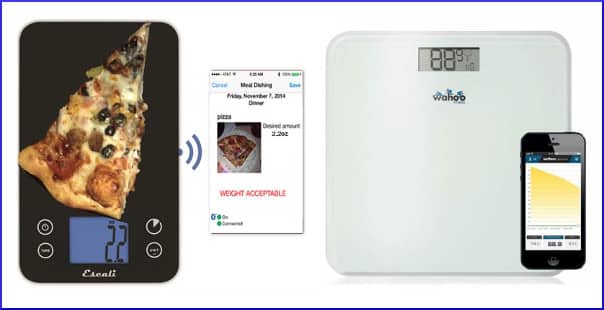
As we have seen, for the W8Loss2Go program, Dr. Pretlow initially tried a “cutting in half” method in which the participant would first take what for her or him would be a typical serving, then put back half, or even a quarter. The fraction was irrelevant because just “eyeballing” the portions didn’t work anyway. The mind is a trickster, especially when rewards are involved, and food is very rewarding.
As a 10-year-old boy in the study noted, “Tt lets you get away with more than you’re actually supposed to have.” It became evident that some sort of measuring would have to be implemented, and there was an intermediary try-out stage, which Dr. Pretlow describes thusly:
We had participants measure out their amounts at meals with measuring spoons, cups, and rulers. Then, they would remove 1/2 inch, 1/2 tablespoon, 1/4 cup, etc. from whatever portion they were serving themselves. That procedure also didn’t work very well, because their starting amounts were too indefinite and attempting to progressively reduce amounts was too inaccurate.
Then the process was further refined:
Finally, we had participants weigh their typical portions with a food scale. Then, they would remove an ounce, etc., and put it back. That procedure was an order of magnitude improvement in the amounts reduction process, because it turned the amounts they were eating into a number, which the app could then progressively reduce in small increments. And, participants were amazed that they didn’t miss the subtracted amounts.
In an audio clip, we hear one of the participants express that very thought. Another, a young woman of 17, reported, “It works because it’s an ‘exact number, ‘ I can’t add more or less, there’s no decision.” Just as with anything worth doing, the setup involves a bit of focus. The person needs to choose a baseline group of frequently-eaten foods and enter some information and so on. Then,
Participant will eat only those progressively reduced amounts from his/her logged foods list, and no other foods, until his/her weight starts dropping. If his/her weight drops and continues dropping, the food amounts are kept at that percent cut level. If his/her weight stops dropping, amounts are reduced by further percent cuts of all the foods logged, until the weight resumes dropping.
Makes sense, right? There are a few other things to know, for instance:
The “Tare” function of the scale allows zeroing out the weight of the plate and each food in turn, when the foods are added one at a time to the plate for the meal. Thus, there is no mess, and the meal is ready to eat.
For younger kids, it’s really great when a parent or older sibling is on hand to help out. Hopefully, older kids will find a source of accomplishment and pride as they master the learning curve and become expert in helping the program to calibrate their servings. Some, like the young lady heard in this audio excerpt, will really get into it.
Once again, we recommend the very thorough documentation of how the W8Loss2Go smartphone app can help to change a life. In particular, for a serious hardcore information-acquisition session, turn to these pages that explain the application’s rationale, methods, and instructions.
Your responses and feedback are welcome!
Image source: W8Loss2Go

 FAQs and Media Requests:
FAQs and Media Requests: 











